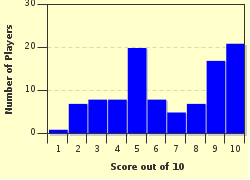Quiz Answer Key and Fun Facts
1. The lower House of the German Parliament is known as what?
2. Which of the following served the longest term as German Foreign Minister?
3. Which of the following served as Chancellor for sixteen years, the longest for any 20th century German Chancellor?
4. In German politics what is the role of the "sperrklausel" or "election threshold"?
5. The Willy Brandt government had a foreign policy that tried to strike accommodation with the the German Democratic Republic. What was this policy called?
6. Who was the Chancellor most associated with the German "wirtschaftswunder" or economic miracle?
7. What is the correct name of the Constitution of the Federal Republic of Germany?
8. Besides Willy Brandt who was the other Social Democratic Party (SPD) Chancellor of the Federal Republic during the 20th century?
9. Chancellor Angela Merkel heads the current "Grand Coalition" governing Germany. Who ran the last "Grand Coalition" in the Federal Republic and what were the years?
10. From 1949 until 1999 in which city was the capital of the Federal Republic of Germany located?
Source: Author
skipp1
This quiz was reviewed by FunTrivia editor
trident before going online.
Any errors found in FunTrivia content are routinely corrected through our feedback system.

